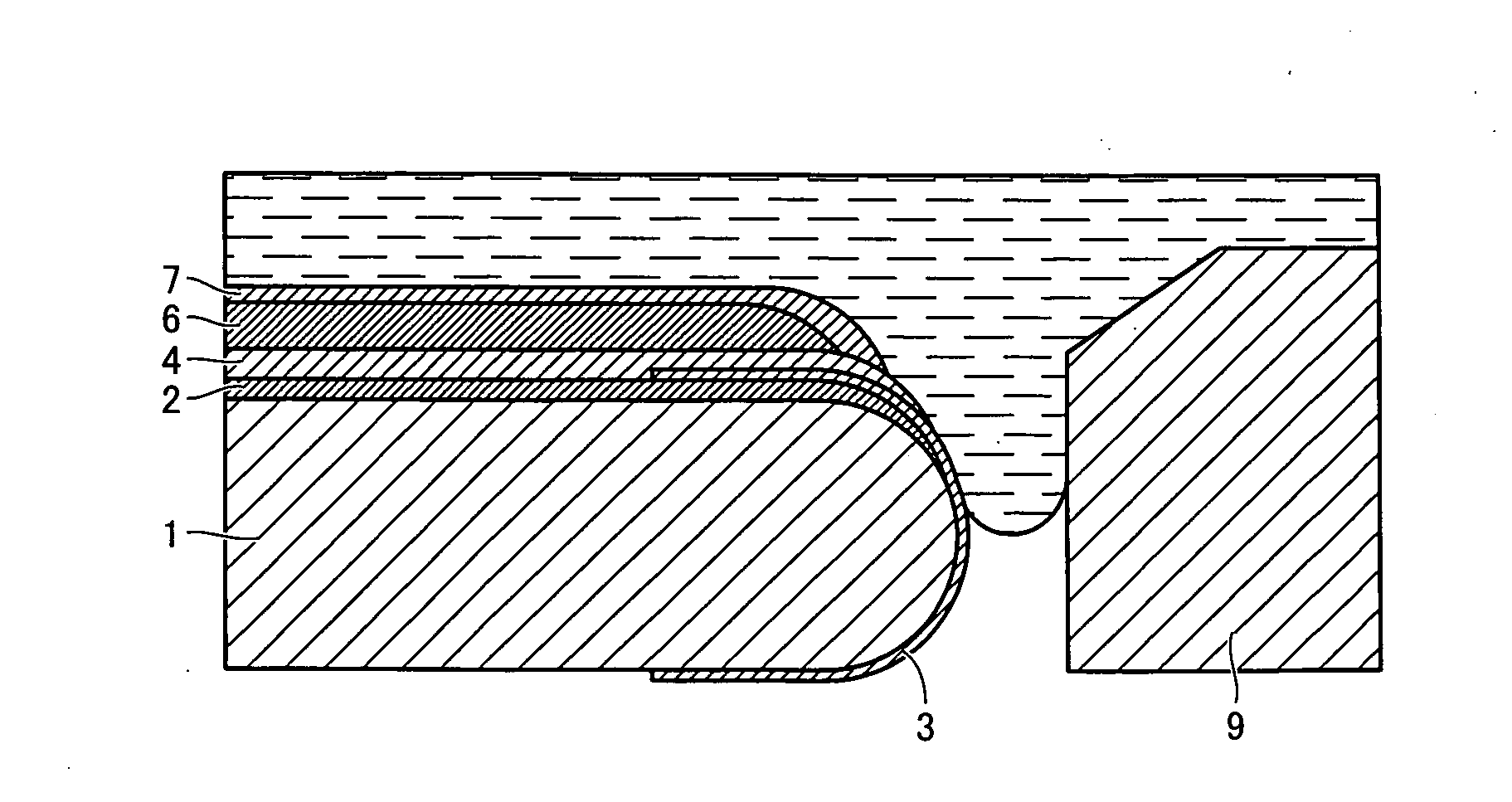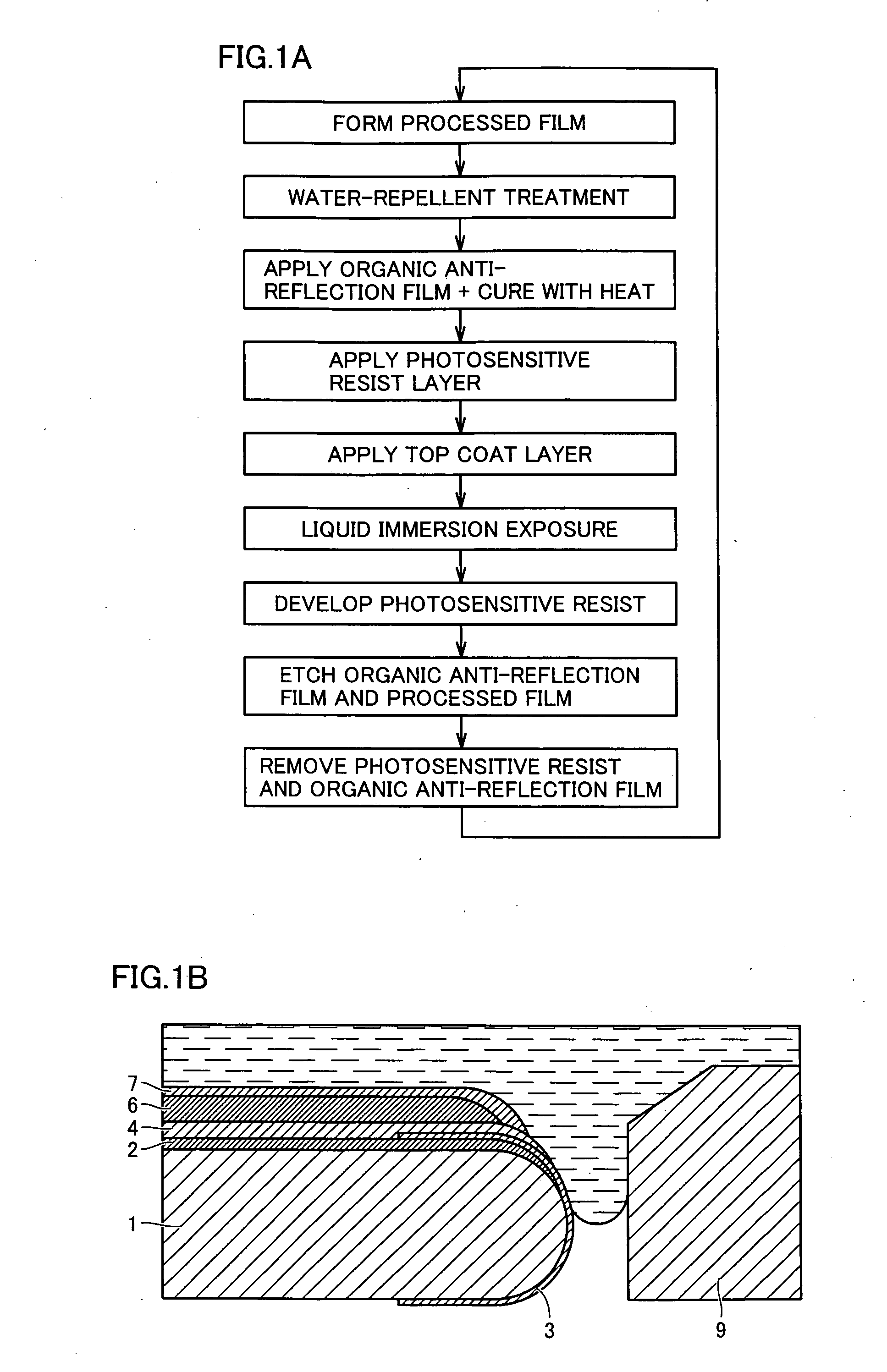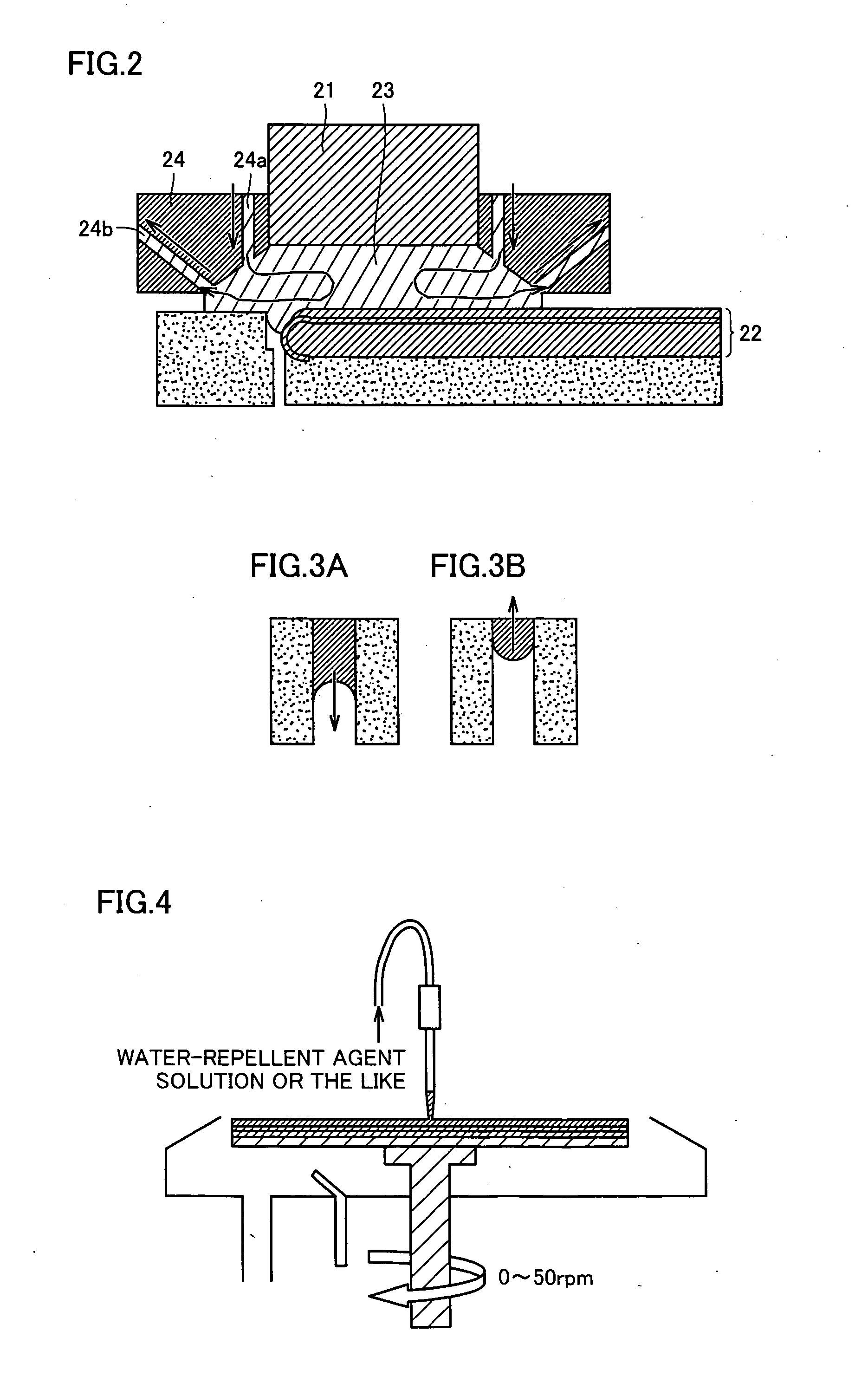Method of forming resist pattern and semiconductor device manufactured with the same
a technology of resist pattern and semiconductor device, which is applied in the direction of photomechanical equipment, instruments, originals for photomechanical treatment, etc., can solve the problems of meniscus collapse, film peeling, and the inability to fully expose the liquid, and achieve high water repellent and film peeling suppression
- Summary
- Abstract
- Description
- Claims
- Application Information
AI Technical Summary
Benefits of technology
Problems solved by technology
Method used
Image
Examples
example 1
[0065]In order to mainly achieve improvement in water-repellency of an Si wafer, a water-repellent agent solution A including a solvent not dissolving the resist was prepared. In addition, in order to mainly achieve improvement in water-repellency of the Si wafer, a water-repellent agent solution D including the solvent dissolving the resist was prepared. For water-repellent agent solution A, 3,3,3-trifluoropropyltrimethoxysilane (KBM7103 manufactured by Shin-Etsu Chemical Co., Ltd.), tridecafluorohexyltrimethoxysilane (SIT8176-0 manufactured by GELEST Inc.), 2-(3,4-epoxycyclohexyl)ethyltrimethoxysilane (KBM303 manufactured by Shin-Etsu Chemical Co., Ltd.), a mixture of KBM7103 and KBM303 (mixing ratio 3:1), or a mixture of SIT8176-0 and KBM303 (mixing ratio 3:1) was prepared. Each water-repellent agent was dissolved in diisoamyl ether or n-butyl ether, to prepare a dilute solution at a concentration of approximately 3.0 mass %. On the other hand, for water-repellent agent solution ...
example 2
[0070]In the present example, water-repellent agent solution A or a water-repellent agent solution B was employed as the water-repellent agent solution. Water-repellent agent solution A used in Example 1 was also used here. In order to mainly achieve improvement in water-repellency of the organic film, water-repellent agent solution B was prepared by using the solvent not dissolving the resist. As the water-repellent agent, decyltrimethoxysilane (KBM3103C manufactured by Shin-Etsu Chemical Co., Ltd.), KBM7103, or a mixture of KBM3103C and KBM7103 (mixing ratio 1:1) was used. KBM 303 mixed at a mixing ratio of 3:1 with respect to the total mass of the water-repellent agent above was used as the water-repellent agent having adhesion-strengthening effect. Each water-repellent agent was dissolved in diisoamyl ether or n-butyl ether, to prepare a dilute solution at a concentration of 3.0 mass %. In order to avoid hydrolysis of the water-repellent agent, the solvent to be used was dehydra...
example 3
[0073]In the present example, in accordance with the process flow in FIG. 10A, the wafer having the structure shown in FIG. 10B was manufactured. Here, water-repellent agent solution A alone was used as the water-repellent agent solution, water-repellent agent solution B alone was used as the water-repellent agent solution, and a mixture of water-repellent agent solution A and water-repellent agent solution B (mixing ratio 5:5) was used as the water-repellent agent solution. Water-repellent agent solution A used in Example 1 was also used here, and water-repellent agent solution B used in Example 2 was also used here. Initially, after processed film 2 was formed on substrate 1, coating-type organic anti-reflection film 4 was formed to a thickness from approximately 40 nm to 80 nm. The solvent was sufficiently volatilized through heating and curing treatment at 200° C. to 250° C. for approximately 1 to 1.5 minute, and polymers were cross-linked as a result of reaction at a heat react...
PUM
| Property | Measurement | Unit |
|---|---|---|
| angle of contact | aaaaa | aaaaa |
| angle of contact | aaaaa | aaaaa |
| width | aaaaa | aaaaa |
Abstract
Description
Claims
Application Information
 Login to View More
Login to View More - R&D
- Intellectual Property
- Life Sciences
- Materials
- Tech Scout
- Unparalleled Data Quality
- Higher Quality Content
- 60% Fewer Hallucinations
Browse by: Latest US Patents, China's latest patents, Technical Efficacy Thesaurus, Application Domain, Technology Topic, Popular Technical Reports.
© 2025 PatSnap. All rights reserved.Legal|Privacy policy|Modern Slavery Act Transparency Statement|Sitemap|About US| Contact US: help@patsnap.com



